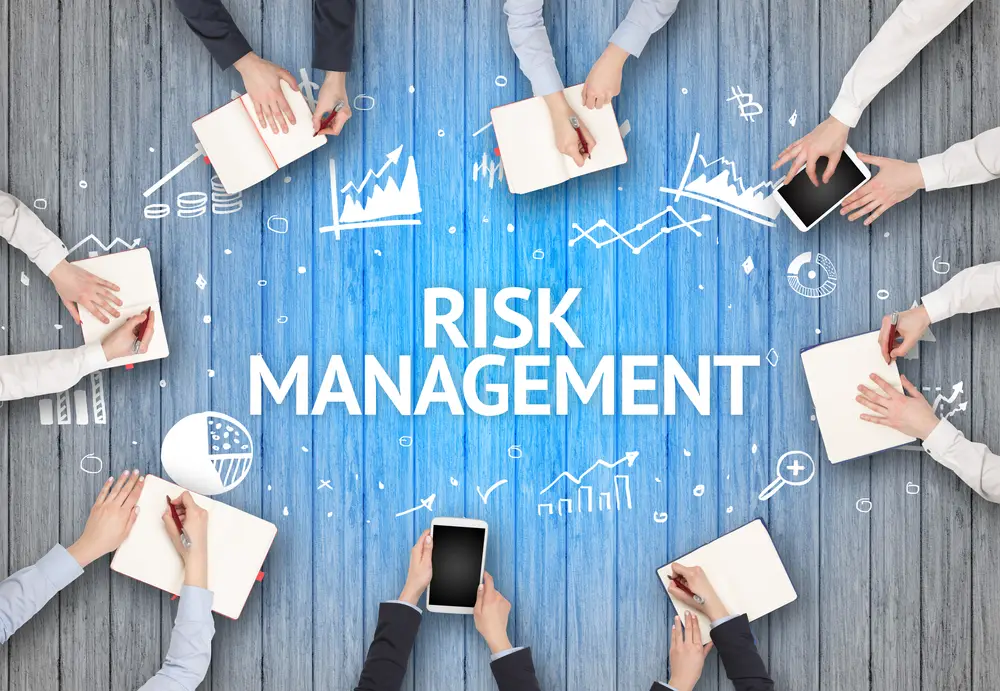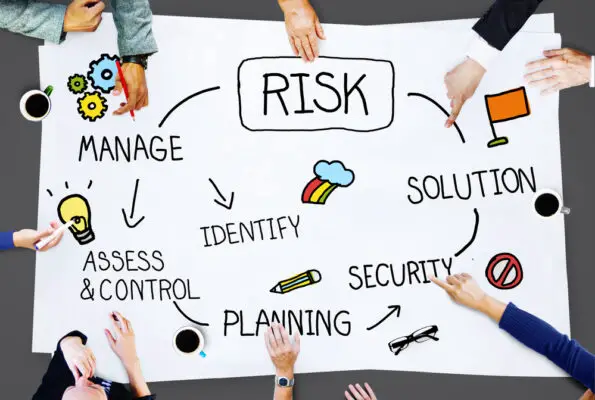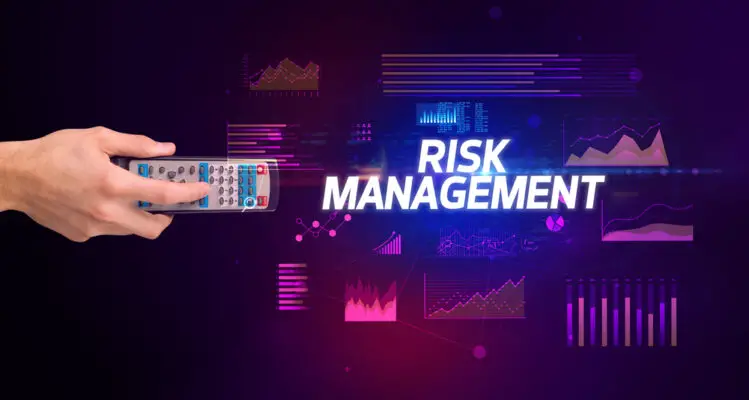Risk management identifies, assesses, and controls threats to an organization’s capital and earnings. This process involves analyzing potential risks and developing strategies to manage them. Risk management helps organizations identify potential risks before they become a problem, allowing them to take proactive steps to mitigate or eliminate them.
The risk management process typically consists of four steps: identification, assessment, response planning, and monitoring. First, organizations must identify potential risks affecting their operations or objectives.
This can be done through brainstorming sessions with stakeholders or by conducting a risk assessment survey. Once identified, organizations must assess the likelihood of each risk occurring and its potential impact on the organization.
After this assessment is complete, organizations can develop a response plan for each risk that outlines how it should be handled if it does occur. Finally, organizations must monitor the progress of their risk management plan’s progress to ensure that it effectively mitigates any risks that arise.
Risk management is a process that helps organizations identify, assess, and manage potential risks. According to ISO 31000:2019, the risk management process consists of five steps:
Establishing the context. This step involves understanding the organization’s objectives and risk appetite and defining the scope and criteria for risk assessment.
Identifying risks involves identifying potential risks that could affect the organization’s objectives. It includes analyzing internal and external factors such as economic conditions, technological advancements, legal requirements, etc.
Analyzing risks – This step involves assessing the likelihood of each identified risk occurring and its potential impact on the organization’s objectives. It also includes determining which risks are acceptable and which require further action. It can also be used for project risk analysis to solve strategic management errors.
Evaluating risks – This step involves evaluating the cost-benefit of different options for managing each identified risk. Risk evaluation also includes deciding which option is most appropriate for managing each risk based on its likelihood and impact on the organization’s objectives.
Monitoring and reviewing – This step involves monitoring how well each risk is being managed over time and making changes if needed to ensure that it remains within acceptable levels of risk for the organization’s objectives.
Risk management identifies, evaluates, and manages threats to a business’s assets and capital. These risks can originate from several sources. A good risk management program helps organizations assess all types of risks that face them. Risk Management also investigates how risks affect organizations and impact their strategic goals.
Do you have an efficient risk management process in place for your business? Having a strong understanding of the risk management process is essential for any organization or individual looking to protect their assets, prevent potential disruptions, and ensure their growth.
The purpose of this blog post is to help readers better understand what the risk management process involves by taking a closer look at its definition, components, and practices. We’ll also provide helpful tips on ensuring your business has the correct policies in place when it comes to managing risks.
Risk Management Process
Risk management is an essential part of any organization, allowing organizations to structure how they handle potential risks and react when they become a reality. A risk management process aims to identify, analyze, evaluate, and treat risks to minimize their impact on operations and performance.
It allows an organization to balance the potential costs associated with different approaches to risk management and assign resources throughout the organization to reduce the likelihood and magnitude of undesirable outcomes.
Risk management should be reviewed regularly by the responsible parties within an organization and updated as needed to keep pace with changes in technology, the political landscape, and other factors that may affect the organization’s ability to manage its risks.
Risk Management possesses several publications documenting how a business must manage risks. The ISO 31000 standard, Risk Management Guidelines, is an international standardization standard that is often referred to as ISS – ISO standard.
ISO’s Five-step Risk Management process includes the outlined steps, which are simple, but the Risk Management Committees shouldn’t underestimate the required process. It requires first understanding what makes organizations tick.
Establishing the context
Is an important first step in risk management. It involves understanding the environment in which risks exist and formulating a plan to deal with them. This includes gathering data and metrics, analyzing possible threats and evaluating current resources available for managing risk. Establishing the context helps to identify potential risks and develop an appropriate plan of action to mitigate or eliminate them.
Risk identification
Is an important part of the risk management process. It is the process of identifying and assessing potential risks that could prevent an organization or program from reaching its objectives. Risk identification involves looking at all possible risks, including those that are external to the organization and those that are internal.
This includes identifying potential threats, such as natural disasters, cyber-attacks, financial losses, and other events that could have a negative impact on the organization’s operations. Risk identification aims to identify any risks that could potentially cause harm to the organization or its stakeholders so they can be addressed in a timely manner.
Once identified, these risks can be assessed and managed through various methods such as risk mitigation strategies, insurance policies, contingency plans, and more for effective risk management.
Operational risk is an important component of risk identification exercise and enterprise risk management. The risk of loss resulting from many normal aspects of business, such as failed processes, people, systems, or external events, can disrupt operations.
Organizations should consider all possible sources of loss and develop strategies to mitigate them. This includes evaluating existing processes and procedures for potential weaknesses, identifying areas where additional controls may be necessary, and training staff on best practices for minimizing operational risks.
Organizations should also consider how their operational risks may interact with other types of risks, such as financial, legal, or reputational risks. For example, a data breach could lead to significant financial losses and damage to an organization’s reputation.
Overall, operational risk management is essential for any organization looking to protect itself from unexpected losses or disruptions. By taking proactive steps to identify and mitigate these risks, organizations can ensure they are prepared for whatever challenges come their way.
Identify existing risks
Risk assessment includes a lot of brainstorming. Usually, companies gather their workers to review risks and determine their risk factors.
The next phase will be to prioritize all detected risks. As it can’t be achieved without a comprehensive risk reduction strategy, prioritising helps to ensure the risk posed importantly is treated immediately.
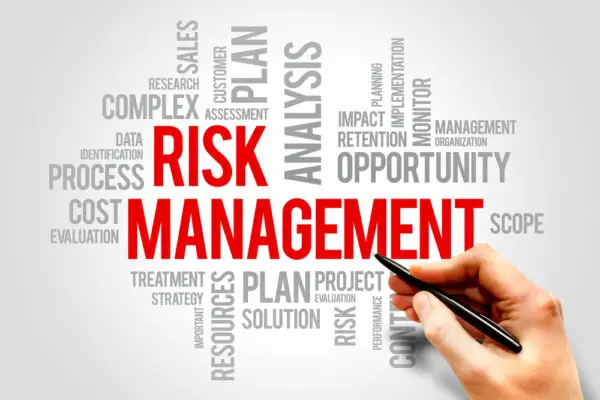
Risk Analysis
Risk analysis is an important part of risk management, which is the process of identifying, assessing, and controlling risks that could potentially affect a business or organization. Risk analysis involves identifying potential risks, evaluating their likelihood and severity, and then taking steps to reduce or eliminate them.
It is important to understand the different types of risk that can affect a business or organization to manage them properly. Common types of risk include financial, operational, legal, environmental, and reputational risks.
Risk analysis typically begins with identifying potential risks that could affect a business or organization. This includes internal and external factors such as changes in the economy, new regulations, technological advances, customer preferences, etc. Once these risks have been identified, they must be evaluated for their likelihood and severity.
The evaluation process should consider both the probability of occurrence and the potential impact on the business if it were to occur. After evaluating the risks, they must be managed by either reducing or eliminating them altogether.
This can be done through implementing preventive measures such as developing policies and procedures for dealing with certain situations or investing in insurance coverage for certain events.
Overall, risk analysis is an important part of risk management as it helps businesses identify potential threats before they become problems.
Through, understanding the different types of risks that can affect a business or organization and taking steps to mitigate them, businesses can remain competitive in their industry while also protecting themselves from unexpected losses due to unforeseen events.
What is risk analysis?
During risk analysis, it is important to identify and evaluate all potential risks in terms of their frequency, impact on objectives, probability of occurrence, and cost. After the risks have been identified and analyzed, appropriate action can be taken to mitigate them.
Risk analysis also involves predicting potential future scenarios that may arise from these risks so that suitable measures can be taken to address the Analysers and give insight into where weaknesses reside.
Because risk analysis has fundamental views, it is crucial to engage stakeholders early to determine risk factors. The key is to describe risk events in detail and distinguish the event’s cause from the event itself.
This helps analyse and manage risks. A good risk analysis and a contingency plan should be based on the plan time and contingency.
Risk Analysis Process
Risk analysis is a qualitative problem-solving methodology systematically involving several different assessment tools. This is an analysis of risks for a particular situation.
Risk analysis is typically broken down into six distinct steps: identification, classification, characterization, evaluation, mitigation and monitoring. First, the risks are identified and classified by type and impact.
Next, they are characterized based on the potential frequency and likelihood of occurrence. After this point, the risks are evaluated in terms of their severity, probability of occurrence and cost of taking action against them. In the fourth step, various strategies are considered to mitigate or reduce the risk.
The fifth step is to monitor any changes in the risks or their associated costs over time. Lastly, additional control measures may be taken to ensure the risks remain within acceptable levels.
Risk Evaluation
Risk evaluation involves comparing the estimated risks against established criteria to determine the significance of the risks. This helps to prioritize risks and identify those that are most likely to have a negative impact on an organization or individual.
Risk evaluation also helps to identify areas where additional controls may be needed, as well as potential opportunities for improvement and risk tolerance levels.
Risk evaluation is the process of comparing the results of a risk analysis with risk criteria to determine whether the risk and/or its magnitude is/are acceptable or not. Risk evaluation involves assessing potential risks, determining who might be affected by them, and what measures can be taken to reduce or eliminate them.
The first step in carrying out a risk evaluation is identifying all potential risks and their associated factors. This includes identifying the risk’s source, potential consequences, and existing controls that may reduce or eliminate the risk.
Once all potential risks have been identified, they must be assessed against predetermined criteria such as severity, probability of occurrence, and cost-benefit analysis. Finally, an overall assessment should be made based on these criteria to determine whether the risk is acceptable.
Risk Treatment
Risk treatment is an important part of risk management. It involves developing a range of options for mitigating business risks, assessing those options, and then preparing and implementing action plans. The goal is to conduct the program or activity in such a way as to reduce the likelihood that risks will occur.
Several types of risk treatment options are available, including avoidance, reduction, transfer, risk acceptance, and risk sharing. A successful risk management strategy should involve evaluating and selecting the right techniques for addressing risk for your organization.
This includes identifying risks and assessing their likelihood before formulating and selecting options to reduce them.
Monitoring and reviewing
It involves regularly checking or surveying the results, recording them, and evaluating the progress made in the treatment plan. Monitoring should be done regularly to ensure all risks are identified and managed effectively.
To carry out monitoring and review, it is important to collect relevant information, analyse it, and make sure that you are doing what you set out to do. Additionally, it is essential to review the risk assessment periodically to ensure its relevance. Lastly, stakeholders’ feedback should be considered when carrying out monitoring and review activities.
Risk Management Standards and Frameworks
Risk management standards and frameworks provide organizations with a set of guidelines for assessing, managing and responding to risks. These guidelines are often based on international standards such as those set by ISO (International Organization for Standardization), ISO 31000:2019.
These standards generally cover topics such as risk identification, risk assessment and strategy selection, decision-making processes, communication strategies, monitoring and review procedures and the roles and responsibilities of all stakeholders making risk management important.
Common frameworks used in risk management include the COSO (Committee of Sponsoring Organizations of the Treadway Commission) Enterprise Risk Management framework and the NIST (National Institute of Standards and Technology) Cybersecurity Framework.
Both present risk governance ways to mitigate risks and manage risk like market risk ,interest rate risk and insurance risk.
The regulatory and board-level surveillance of corporate risk management practices has also increased, with risk analysis, internal audit, risk assessments and other components of risk management forming an essential part of business strategies.
Financial risk and compliance services
Rapid insights reduce infrastructure costs while improving the performance of business decision-making by using IBM RegTech software.
Financial risk and compliance services are key to any organization’s operations. They help ensure that the company complies with all applicable laws and regulations, as well as help to protect the financial health of the organization.
Financial risk and compliance services can include various activities, such as developing policies and procedures for managing financial risks, conducting audits and reviews of internal controls, providing advice on regulatory compliance issues, and monitoring changes in the legal and regulatory environment.
Additionally, these services can help organizations identify potential risk areas in their operations and develop strategies to mitigate them.
Organizations may choose to outsource their financial risk and compliance services to an experienced third-party provider. This can be beneficial because it allows organizations to access specialized expertise without hiring additional staff or investing in expensive technology solutions.
Outsourcing can provide organizations with access to resources that they would not otherwise have available.
When selecting a provider for financial risk and compliance services, it is important for organizations to consider factors such as the provider’s experience in the industry, their reputation for delivering quality results, and their ability to meet deadlines.
Organizations should also consider how well the provider understands their specific needs and objectives. By doing so, organizations can ensure that they select a provider who will best meet their needs while also providing them with value for money.
Overall, financial risk and compliance services are essential for any organization looking to remain compliant with applicable laws and regulations while protecting its financial health.
Develop preventive mechanisms for identified risks
These ideas are then developed into several tasks to help mitigate risk and then into planned contingencies. If there are problems, the plan is ready for implementation.
Preventive mechanisms are an important part of risk management. They help to identify potential risks and take steps to prevent them from occurring in the first place. By proactively addressing risks, organizations can reduce the chances of experiencing negative impacts due to those risks.
When developing preventive mechanisms for identified risks, it is important to consider both the short-term and long-term effects of the risk. Short-term effects may include immediate financial losses or damage to reputation, while long-term effects may include legal liability or a decrease in customer trust. It is also important to consider how the risk could be mitigated or avoided altogether.
Organizations should also develop a plan for monitoring and evaluating their preventive mechanisms on an ongoing basis. This will help ensure that they are effective and up-to-date with changing circumstances.
Overall, preventive mechanisms can be an effective way to reduce the likelihood of experiencing negative impacts due to identified unacceptable risks.
Security governance, risk and compliance
Security governance, risk and compliance (GRC) is an important part of any organization’s overall security strategy. It involves establishing a clear set of policies and procedures for managing risks, protecting data, and complying with applicable laws and regulations.
Security GRC includes a range of activities such as identifying potential threats, conducting risk assessments, implementing measures to prevent unwanted incidents, monitoring the effectiveness of those measures
Responding to incidents when they occur, and ensuring ongoing compliance with legal requirements. It is designed to help organizations reduce their exposure to potential losses due to cyber threats while also protecting their reputation and customer trust.
To effectively implement security GRC, organizations should develop a comprehensive plan that outlines the policies and procedures that will be followed. This planning process should consider factors such as budgeting for security technology and creating an incident response plan.
In case of a breach or attack, train personnel on following security protocols. Additionally, organizations should regularly review their GRC processes to ensure that they are up-to-date with changes in the industry or applicable laws.
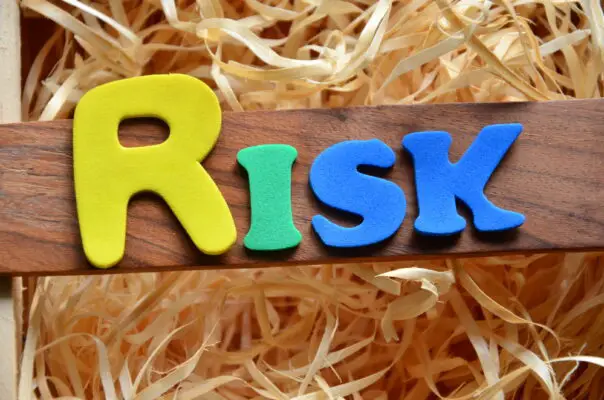
Conclusion
Overall, it is clear that risk management processes are an essential necessity in any type of business. When strategically designed and implemented, these processes can help identify potential risks to the company’s operations and determine an effective action to prevent or mitigate such risks.
Companies should provide adequate resources for their risk management process, as it will ultimately pay off with greater returns on investments and an improved ability to handle unexpected obstacles.
All stakeholders should be informed and involved in developing and implementing risk management procedures to provide constructive feedback, which may create greater efficiencies through reduced costs or higher profits within the organization.
Finally, organizations should remain vigilant as preventive measures can change over time depending on external factors. If a company stays up-to-date on their risk management strategies, it will be well-positioned to manage better any unforeseen challenges that come its way.

Chris Ekai is a Risk Management expert with over 10 years of experience in the field. He has a Master’s(MSc) degree in Risk Management from University of Portsmouth and is a CPA and Finance professional. He currently works as a Content Manager at Risk Publishing, writing about Enterprise Risk Management, Business Continuity Management and Project Management.

